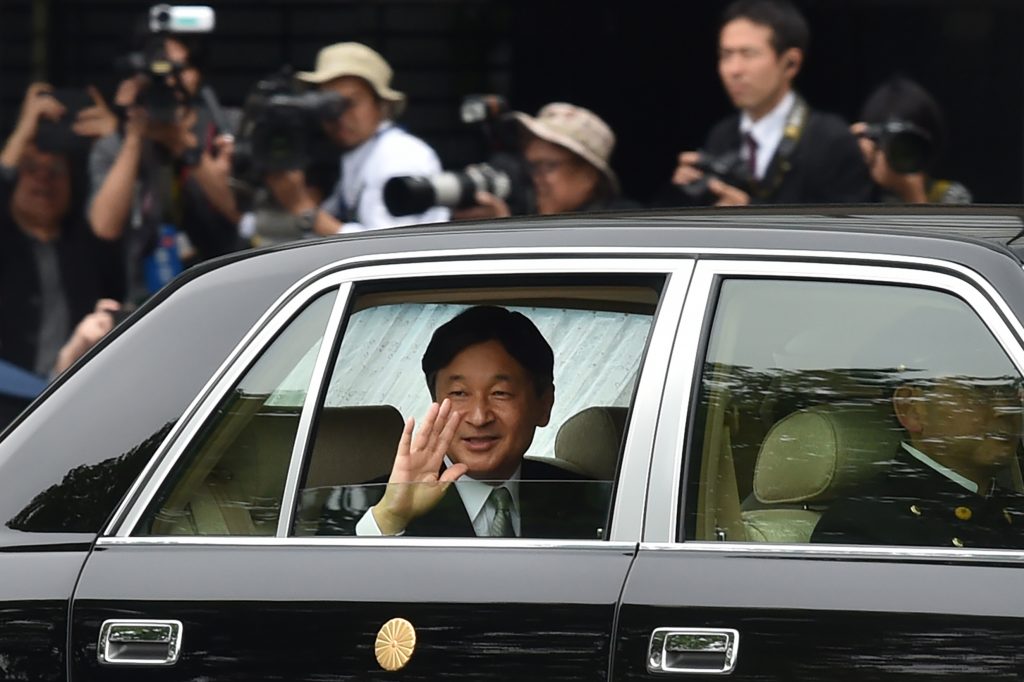
- ARAB NEWS
- 01 Aug 2025

Daniel Fountain, Tokyo
The enthronement ceremony to mark the ascension of Japan’s Emperor Naruhito is to be held on Tuesday in Tokyo, marking a new era in the country’s ancient royal family.
Emperor Naruhito, 59, officially took up his position on the Chrysanthemum Throne on May 1, following the abdication of his father Emperor Akihito on April 30 this year, who was the first monarch to abdicate the Japanese throne in more than 200 years.
Akihito was given special permission to step down due to his declining health making him unable to fulfill his duty to the best of his ability, and on May 19, 2017, the bill that allowed him to abdicate was issued by the Japanese government’s cabinet.
Tuesday’s enthronement marks the end of a transition period between the two emperors and is the more formal ceremony. It forms part of a series of events around the ascension over several months, during which the Emperor’s crown prince will also be declared.
Naruhito’s succession brings in a new era in the royal line, named “Reiwa” meaning “beautiful harmony” and politically — while his father devoted his reign to helping the less fortunate in society — Naruhito is expected to play a more international role in the promotion of Japanese interests.
The enthronement is being attended by about 5,000 official guests, which will include high-profile visitors from 195 countries, including a delegation from Saudi Arabia.
Tradition plays an important role in the ceremony, something that sets the world’s oldest continuous hereditary royal line apart, according to Kamayani Singh of NHK World — the global division of the country’s public broadcaster.
“It is a very long lineage, which has run for more than 2,600 years,” she said.
“It is highly traditional and it is said that the ceremonies are exactly the same as they have been for thousands of years.
“The only change in modern times is that it is now televised and everybody can watch it, and that is the beauty of the royal family’s traditions,” she added.
Imperial regalia dating back thousands of years are given to the new emperor during the course of his ascension, including the presentation of the “Three Sacred Treasures of Japan” immediately after the death or abdication of the previous emperor.
Tuesday’s event, the “Sokui-no-Rei,” is the enthronement of the new monarch, which for thousands of years was held in Japan’s ancient capital of Kyoto, but was moved to Tokyo in 1990 for Akihito.
It will start with a private ritual in which the emperor states his proclamation to ancestors, he will then appear in the Imperial Palace with his wife, Empress Masako, in historical ceremonial outfits to make a short speech followed by an address by Prime Minister Shinzo Abe.
In modern times, the final rite in the enthronement is the firing of a 21-gun salute by Japan’s Self-Defense Forces.
The ceremony, the royal family and their symbolism form part of the Japanese identity, according to Singh.
“To Japanese people, it is really important because the monarch is the symbol of Japan and gives a sense of ‘Japanese-ness’ in a traditional, Shinto way,” she said, referring to the emperor’s role as the highest authority in Japan’s majority religion.
Since the role shifted following the Second World War from an absolute monarchy to a symbolic figurehead of the country, questions surrounding the public funding of the royal family have been raised in modern Japan, but Singh said that most people find a source of pride in the monarchy.
“It is a monarchy which has lasted for so long, so while some people believe tax money could be spent in better ways, most people want it to continue and want them to stay as a symbol of Japan,” she said.
“The last emperor, and the current emperor and his wife, are seen as very kind people — touching people’s lives through a lot of humanitarian work — so people say ‘let them continue,’ for they are the pride of Japan,” she added.
However, there is a generational divide in how the enthronement ceremony is perceived.
“For younger people, it is less about tradition and more about fun as there are national holidays surrounding the event — it is something to celebrate,” Singh said.
“However, at the same time, they do not feel as connected to the ceremony as people used to be, perhaps one or two generations ago.
“In modern Japan, there is a mixture of both feeling Japanese and seeing in the new emperor and empress as well as having fun,” she added.
A celebratory parade for the public to show their respect to the new emperor and empress, which was also scheduled for this week, was postponed following Typhoon Hagibis on Oct. 12, which claimed 80 lives and caused $9 billion of damage.